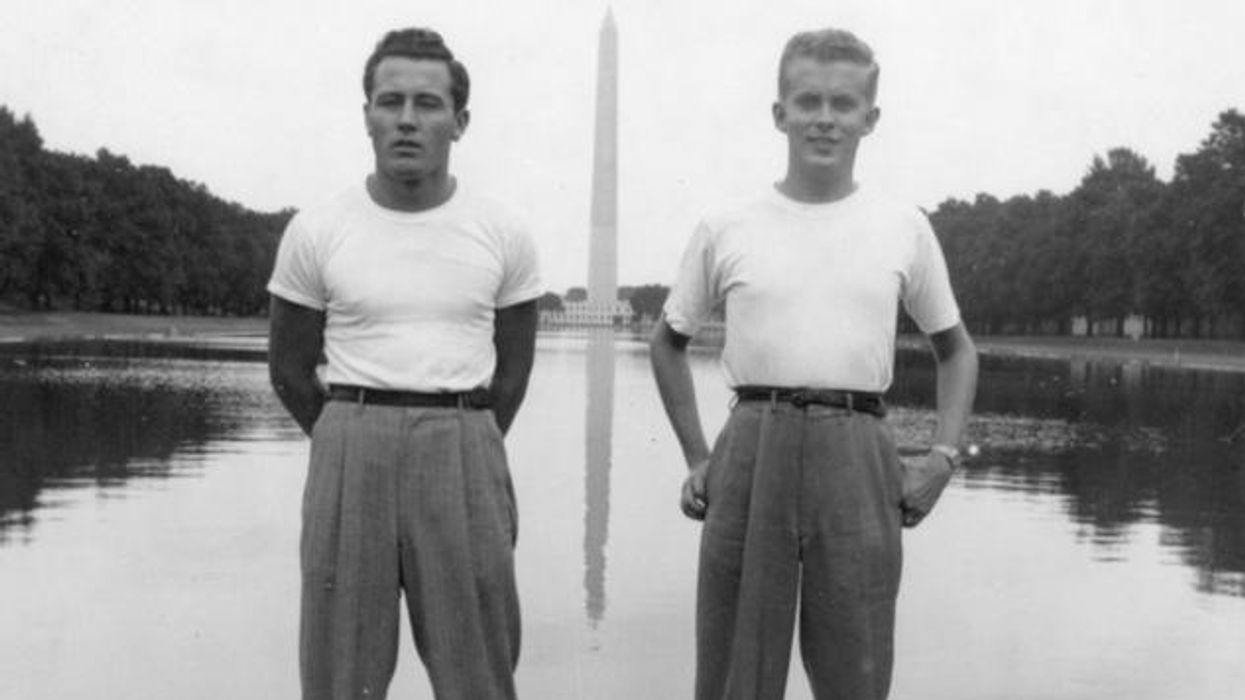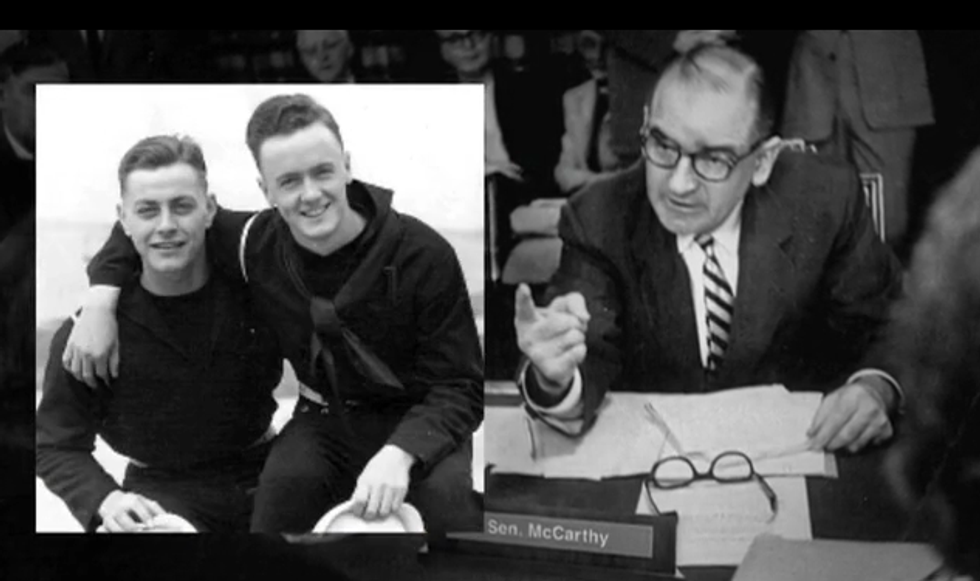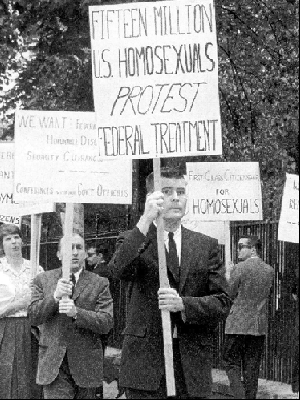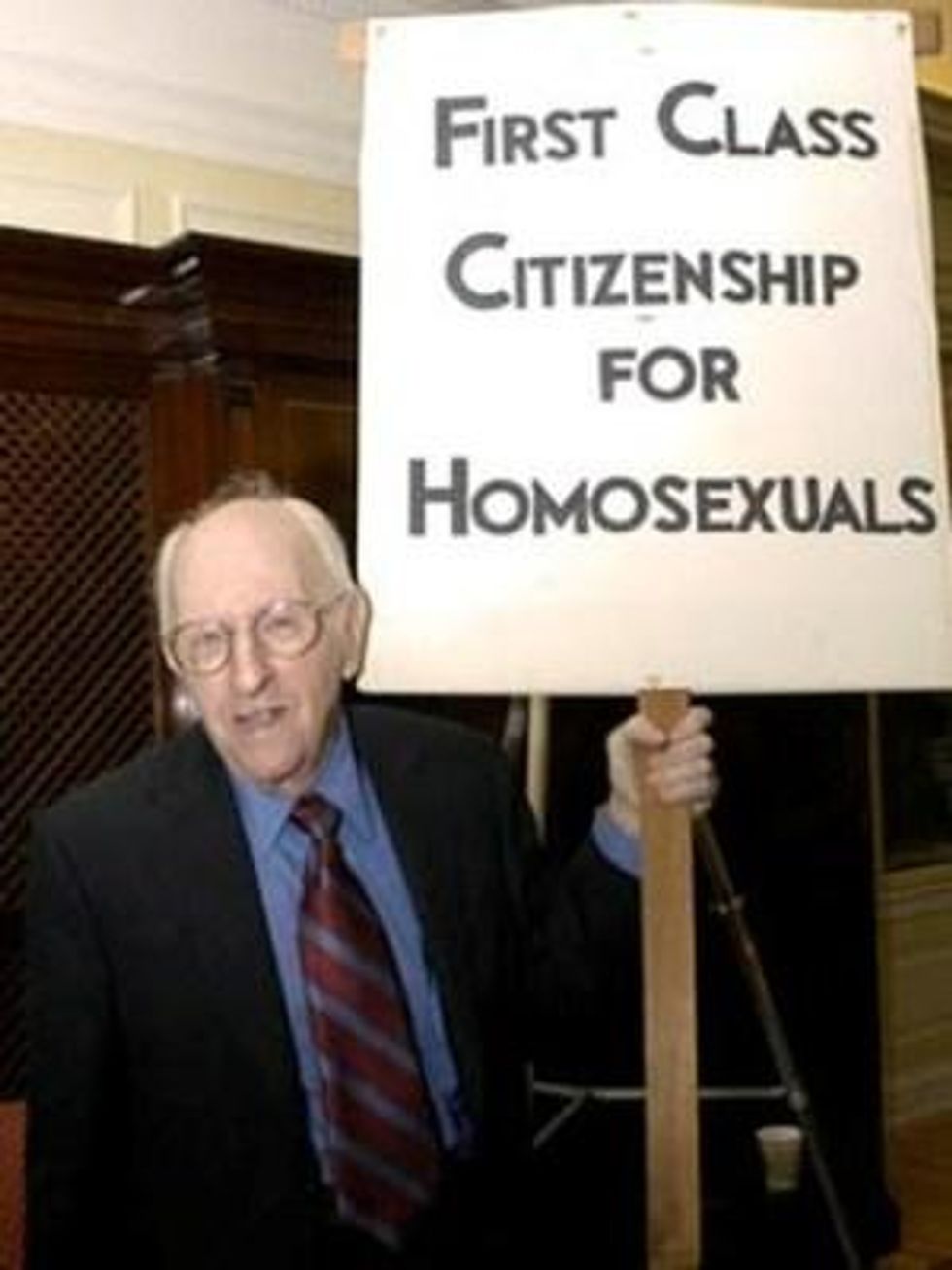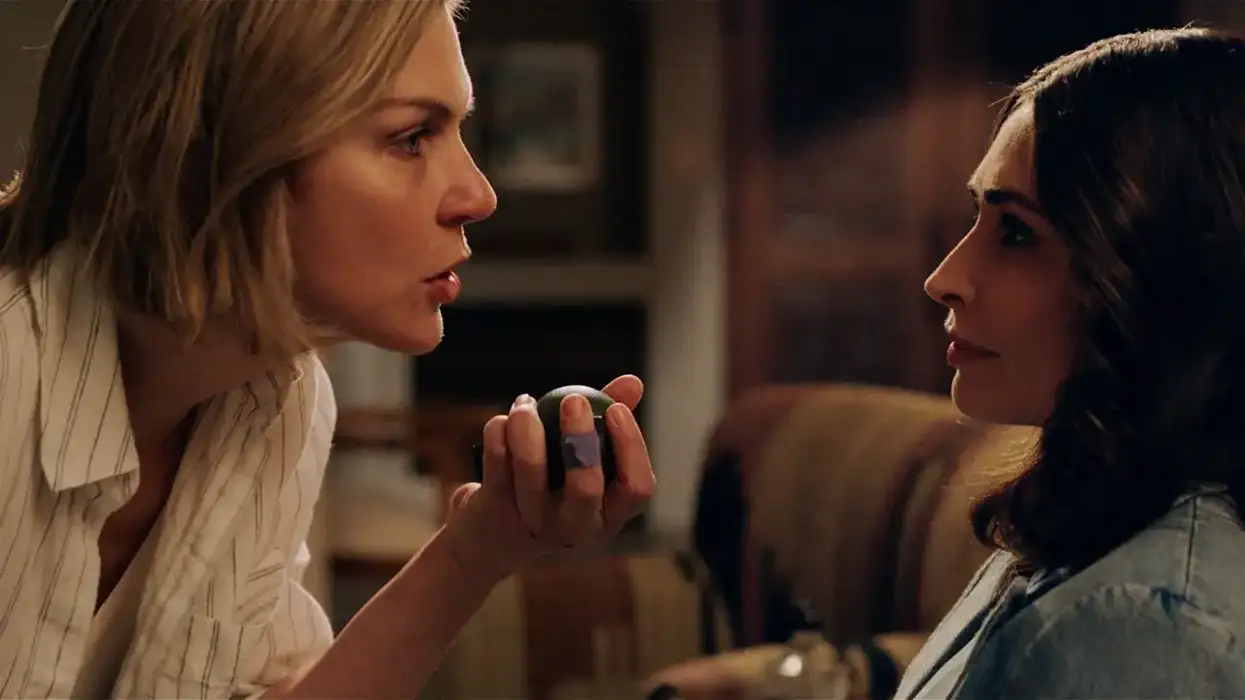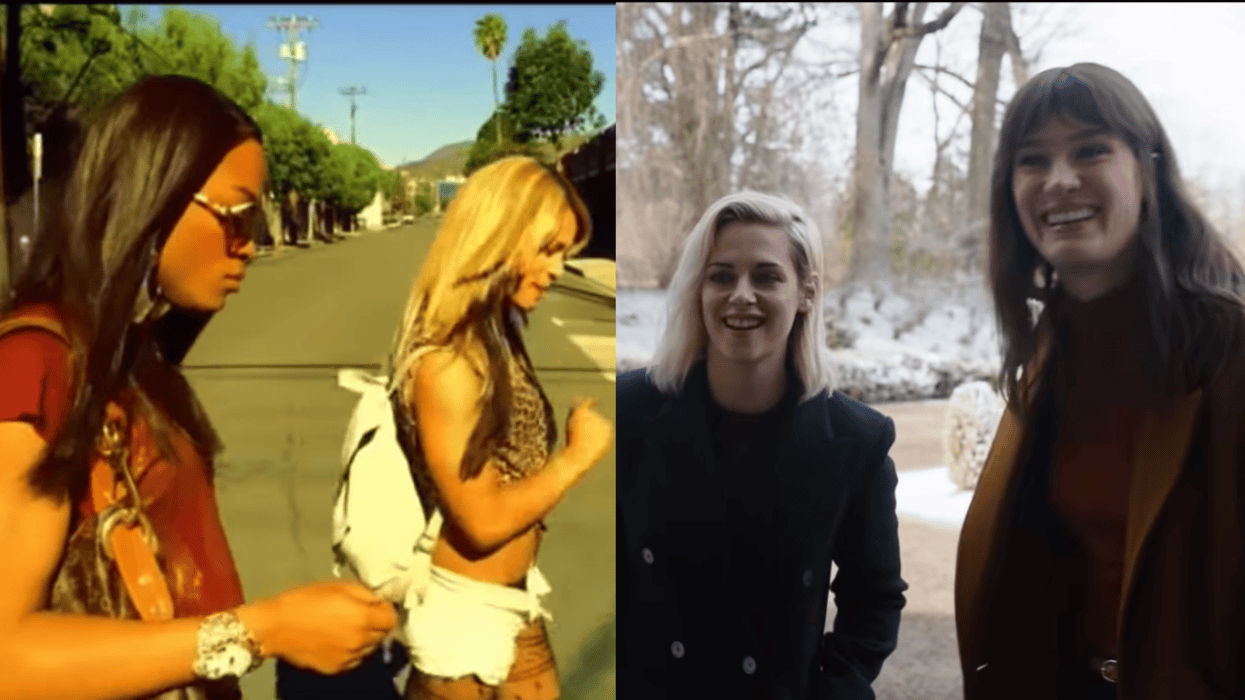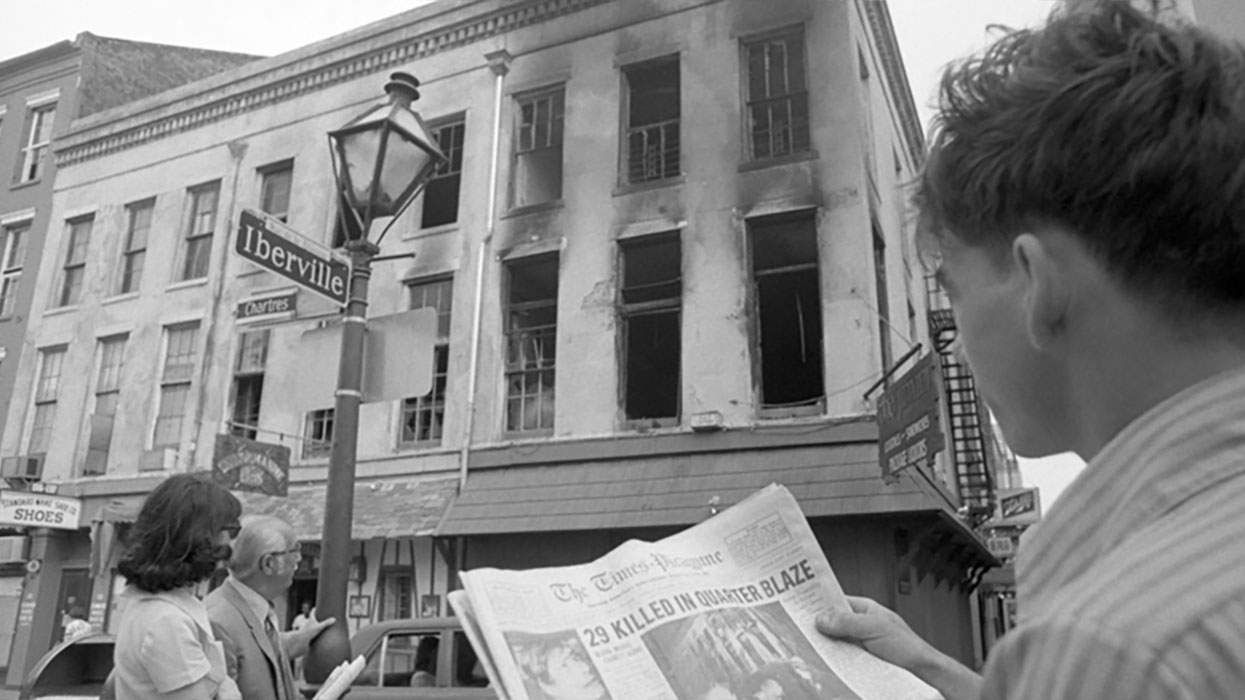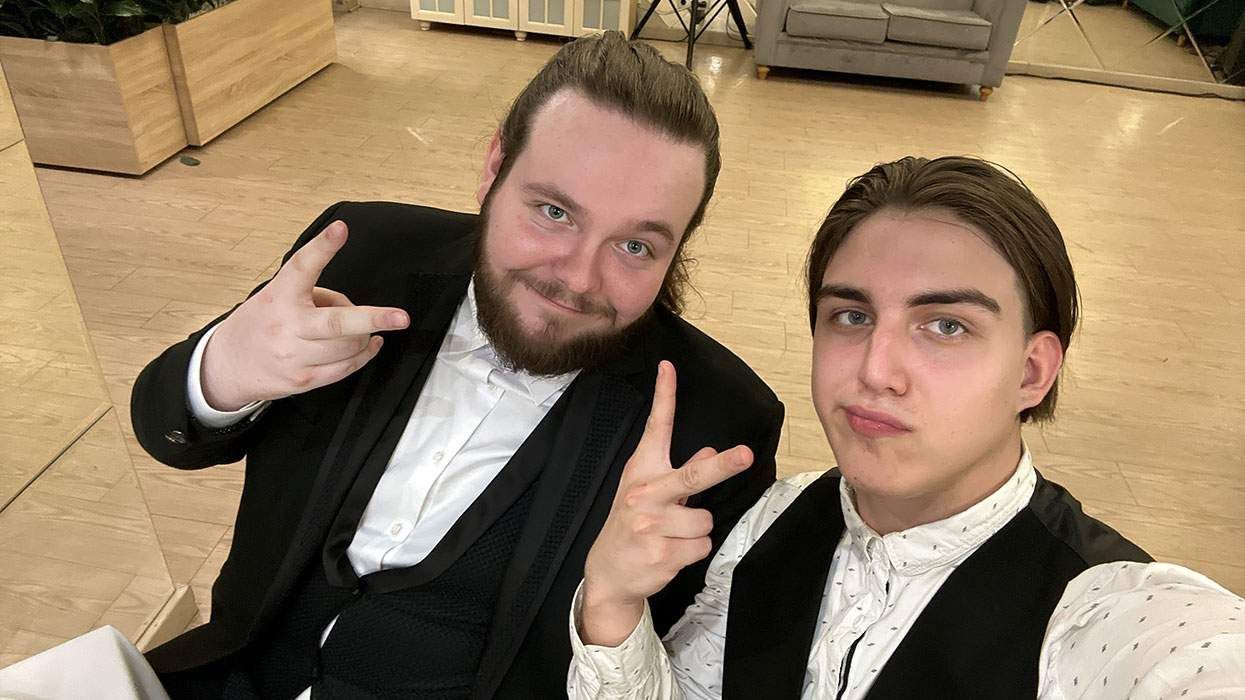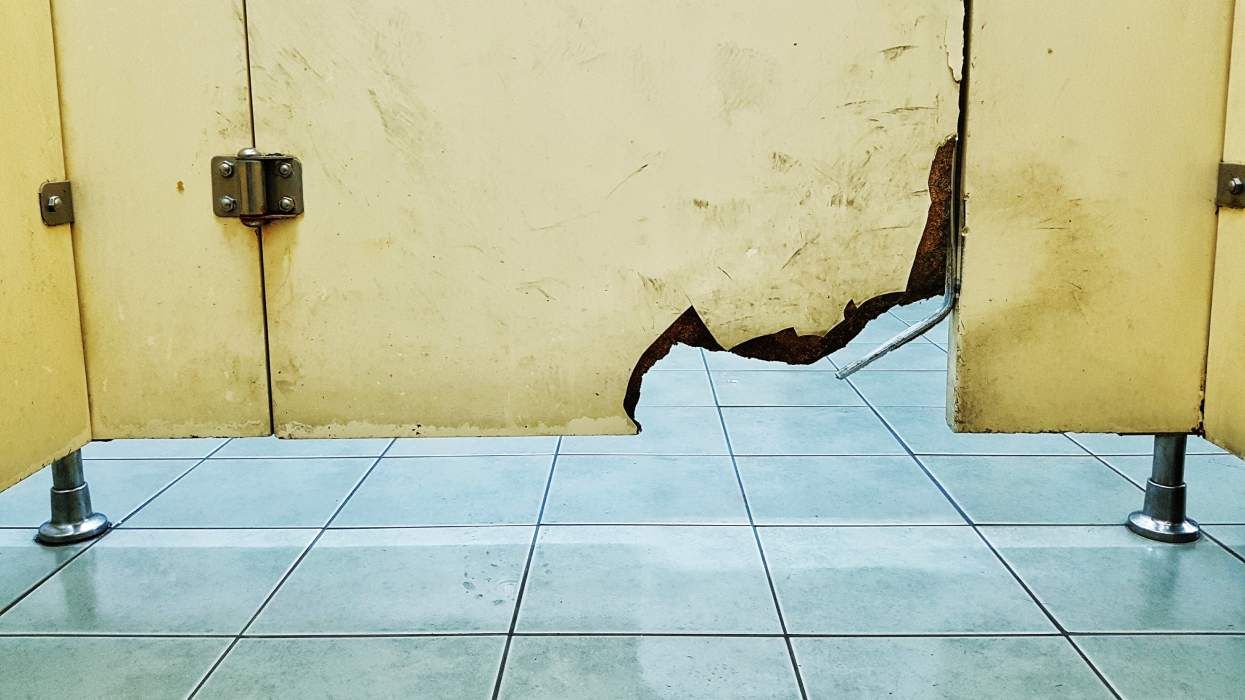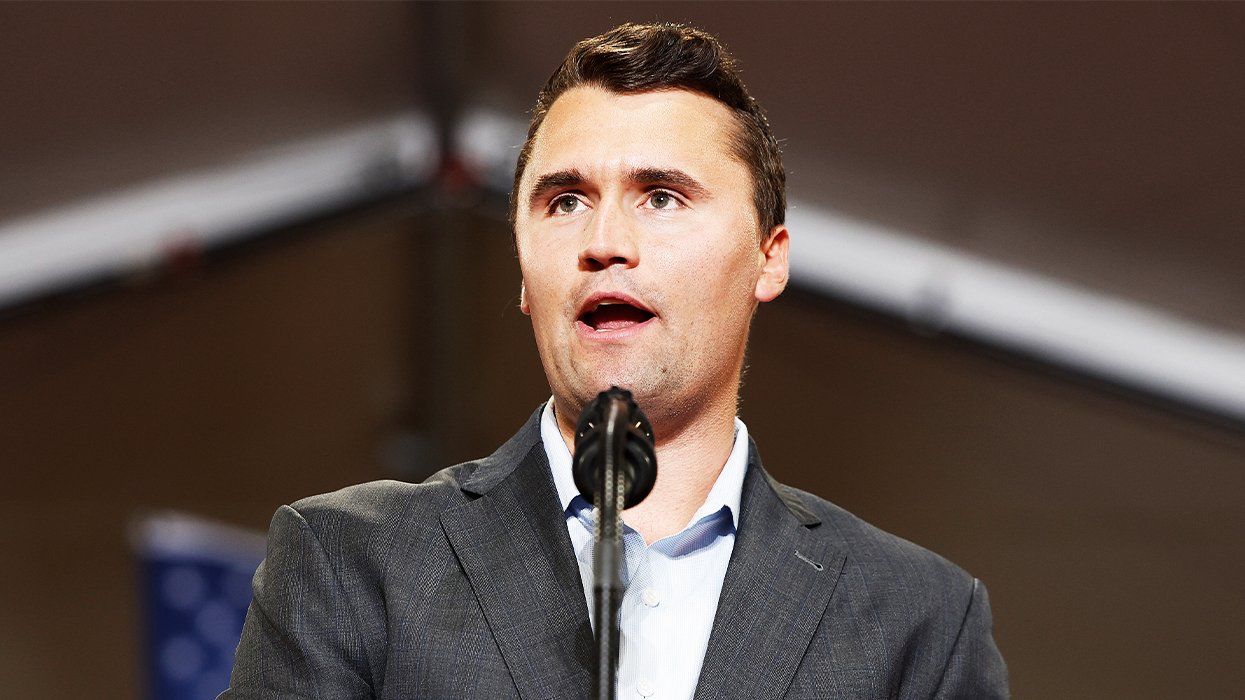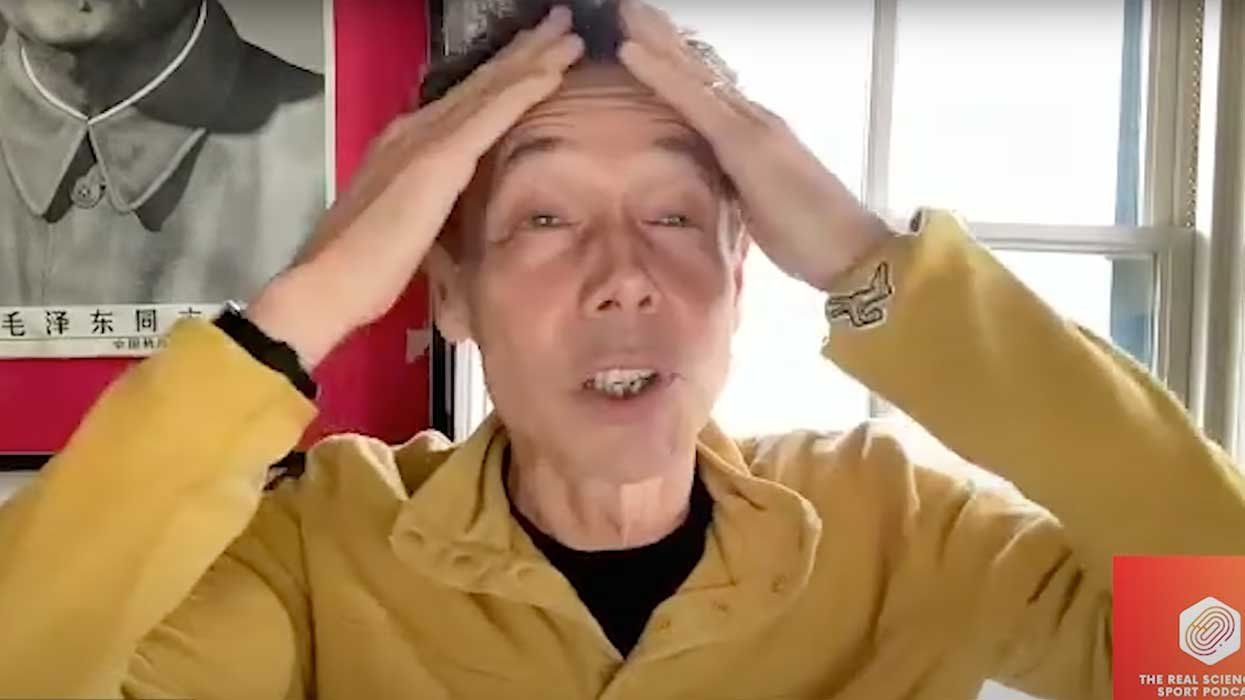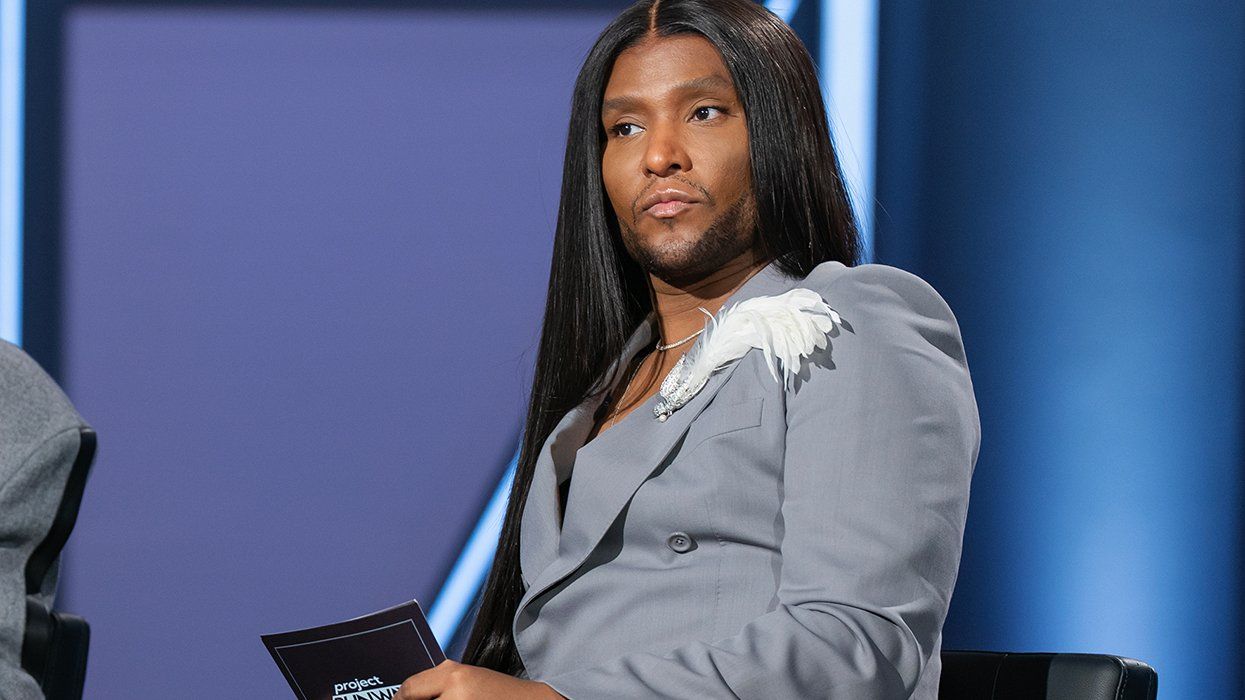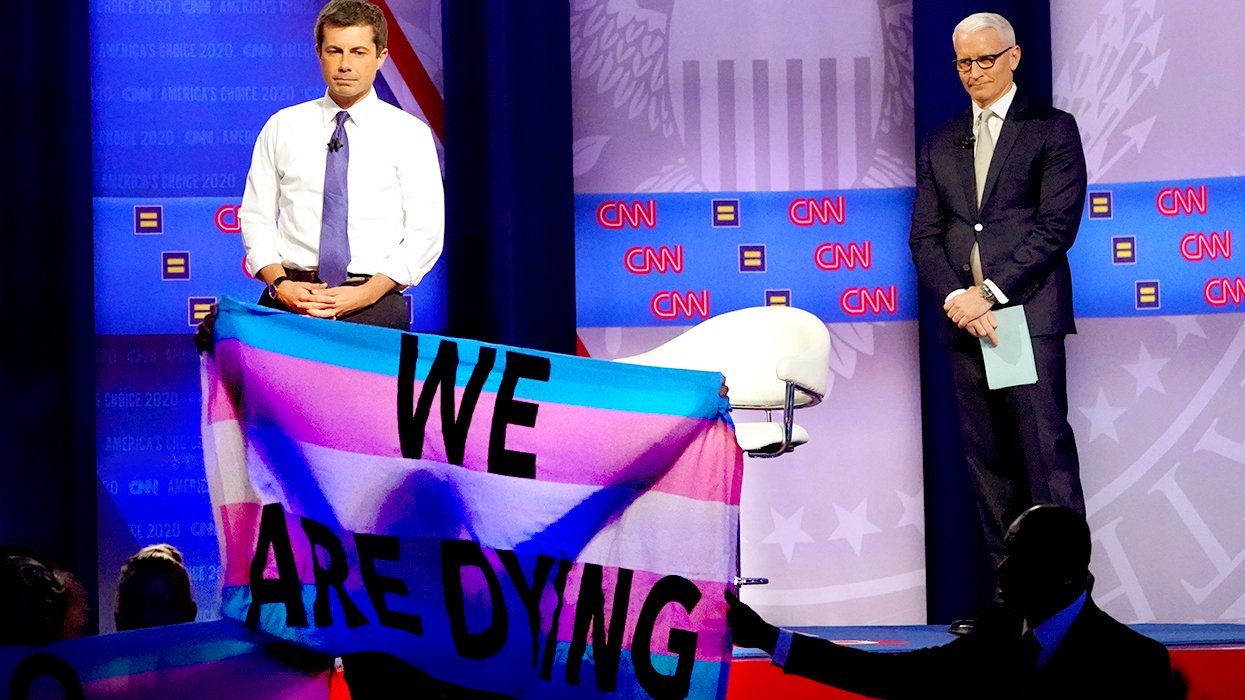(Above, right, powerful and closeted gay lawyer Roy Cohn was instrumental in creating anti-Communist fervor.)
Tomorrow's a lamentable anniversary for the United States: it was 60 years ago, on April 27, 1953, that President Eisenhower put his John Hancock an executive order demanding all gay and lesbian government employees be fired. Not really something you want to celebrate, right? But it is something you should know about, which is why director Josh Howard began production on The Lavender Scare, a documentary based on Dr. David Johnson's book of the same name. It's also the first cinematic account of how our government tracked down gays and lesbians in the mid-20th Century.
This project began in 2009, when Howard, a former Emmy-winning producer for CBS' 60 Minutes and later CNBC, stumbled across Johnson's book. He hadn't intended on turning it into anything, and certainly didn't intend on leaving his job to direct a documentary, but as he read on, and researched on his own, the subject gripped him.
Unable to shake the feeling that there was more story to tell, Howard approached Johnson, now a professor at the University of South Florida, about optioning the book. Johnson agreed, and for the past two years Howard has tracked down as many sources as possible to fill in the gaps, including Frank Kameny, a government astronomer fired who was fired for being gay in 1957 and went on to lead the first public protests against the anti-American policy.
Howard also managed to find a few of the government agents tasked with spearheading the anti-gay witch hunt. One remains particularly unrepentant. "The people that I got rid of, they were f****ts," he says, under the cloak of darkness, in the film's trailer, included below. "I didn't give a hoot; get rid of the son of a bitch. Put him in the bread line."
As far away as this may all seem, keep in mind that lawmakers and activists are still fighting for Employment Non-Discrimination, policies that would finally create federal laws making illegal to fire LGBT people. (As you know, it's legal in 29 states to fire gay and lesbian employees and legally acceptable in 34 to do the same for transgender people as well.) And this isn't simply about homophobia or jobs. It's about the nagging, tenacious ability of Americans to participate in or turn a blind eye to injustice, a trait foreign observer EM Forster saw right away. Whether it's scapegoating gays during then Lavender Scare or Muslims after 9/11 or Japanese-Americans during World War II, this a completely unattractive and persistent quality, and it's one that Howard hopes this film can help eradicate.
To get to that point, though, Howard and his team need to finish editing and licensing the bundle of archival materials they hope to include, and that requires money. Supporters can give them a little greenback love at Kickstarter. They're shooting for $50,000 and donations end on May 21, which would have been Kameny's 88th birthday.
Here, Howard offers us the basics on The Lavender Scare, the policies it spawned, what happened to those policies and why this son of a bitch story still matters.
(Left: Frank Kameny can be seen toward the left in this picture from a 1965 White House picket he helped organized. Right: an older Kameny poses with one of those signs.)
1. WHAT IS THE LAVENDER SCARE? It's the first feature-length film documentary to tell the story of the U.S. government's decades-long campaign to fire every federal employee found to be gay or lesbian. In what became the most successful witch hunt in American history, thousands and thousands of federal workers lost their jobs. More than a few, with their careers in ruins and unable to find work, committed suicide.
2. WHEN DID THIS HAPPEN, AND WHY? In the 1950s, Senator Joseph McCarthy ignited the Red Scare with his allegations that Communists had infiltrated the U.S. government. He then added the claim that gay men and lesbians were even more dangerous than Reds, because they were susceptible to blackmail by foreign enemy agents and would give up government secrets in order to keep their sexual orientation from being exposed. The fear of this supposed homosexual menace became known as the Lavender Scare.
3. HOW MANY HOMOSEXUALS ACTUALLY GAVE UP SECRETS IN ORDER TO AVOID BEING EXPOSED? After several investigations over many years, not a single case was ever found.
4. WERE LGBT PEOPLE ALWAYS FEARED IN WASHINGTON? No! In fact, in the 1930s and 40s, there was a vibrant and very open gay community in Washington. A large number of new government jobs were created after the Great Depression, and many of the people who came to Washington to fill those jobs were gay men and lesbians. They were eager to make a new life in the growing city, and the government was eager to hire them. Same sex couples could be seen holding hands on the trolley or even kissing on the grounds of the Washington Monument. They enjoyed a comfortable work environment and a lively social life. No one could have anticipated the devastating events that were to come.
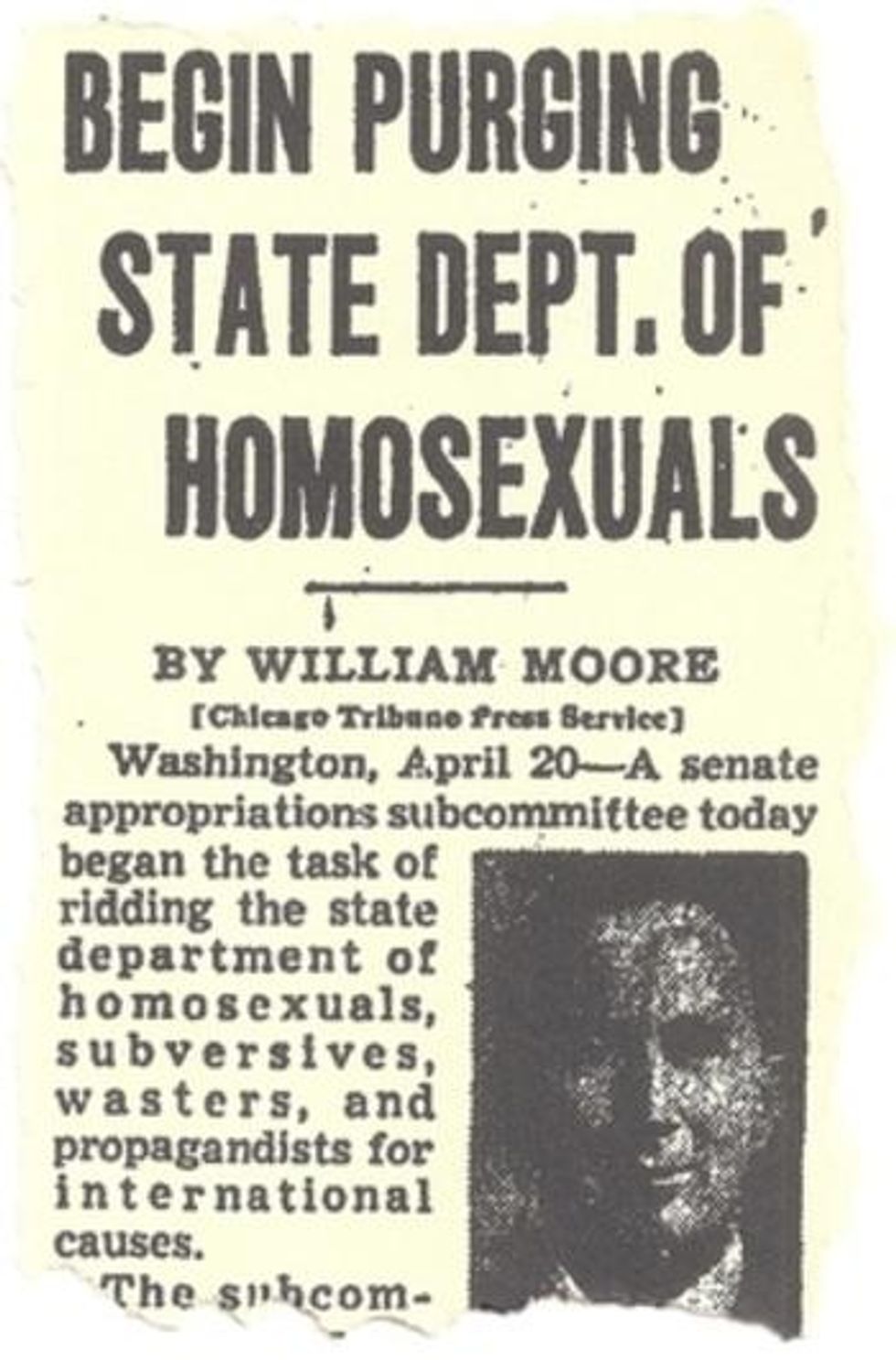
6. DID ANY GOOD COME OF THIS? Yes! In 1957, Dr. Franklin Kameny, a Harvard PhD who had been working for the U.S. Army Map Service, was fired from his job when the government found out he was gay. But unlike the thousands who had been fired before him, he fought back! The purges created a sense of anger and militancy in the gay community that sowed the seeds of the gay rights movement. In 1965, years before Stonewall, Kameny and a small band of brave men and women staged a picket in front of the White House, in what is believed to be the first gay rights demonstration in the country. Kameny went on to devote his entire life to the fight for LGBT rights, and just before his death saw his achievements honored by President Obama.
7. HOW LONG DID THE BAN ON GAY AND LESBIAN WORKERS REMAIN IN EFFECT? People continued to lose their jobs simply through the 1950s, '60s, 70s, and 80s. In 1995, President Clinton officially rescinded the policy that had been put in place by President Eisenhower in 1953, and for the first time in four decades, LGBT people could freely work for the civilian agencies of the federal government. Of course, the ban on service in the military continued for many years beyond that.
8. DOES THIS STORY HAVE ANY PRESENT DAY RELEVANCE? Oh, definitely. There are still 29 states in the country in which it is perfectly legal to fire people simply because they are LGBT - a direct result of our government's homophobic policies that were put in place in the 1950s. We think the story of The Lavender Scare will help educate people about the need for laws on both the state and national level to protect LGBT people from employment discrimination. The federal Employment Non-Discrimination Act, which would extend job protection to LGBT people nationwide, has just been re-introduced in Congress - ironically enough. just as we're marking the 60th anniversary of the start of the government's anti-gay witch hunts.
9. WHY DO SO FEW PEOPLE KNOW ABOUT THIS? This is a classic example of the way in which the struggles and contributions of gay men and lesbians are ignored in the telling of American history. It is shocking that with all the books and films about the Cold War and the Red Scare, the story of the Lavender Scare is almost completely ignored. The Lavender Scare will be the first film to shine a light on this important subject - if we can raise the funds to finish production. As philanthropist and activist Jim Hormel has said, "If LGBT people don't take the lead in preserving our history, who will?"
Now, without further ado, the trailer for The Lavender Scare.


